(Note: This is definitely being posted in time for late Hallowe’en parties, as promised. Unfortunately, those parties are being thrown by people who have been stuck in a time loop for the better part of two weeks and are nevertheless determined to celebrate the holiday of sugar, fireworks, and societally sanctioned cosplay.)
It took thirteen films and seventeen years for Pixar to make a movie about a female protagonist. Despite a host of notable ladies, for most of the studio’s feature filmmaking history, the real focus has been on the men. Dory is arguably the best part of Finding Nemo, but the story is about the father-son bond. Up gave us Ellie, but took her away a few minutes later to jump-start her husband’s adventure. While Helen and Violet get more focus than a lot of other female characters, The Incredibles reserves most of its screentime for Bob’s mid-life crisis and Dash’s frustration at his forced normality. Toy Story, the film franchise that started it all, revolves around Buzz and Woody’s friendship and their bond with Andy. Still, there has been some progress over the years, and that progress can be traced through the Toy Story series and the development of its principal female character, Jessie.
For those who haven’t seen it, Toy Story posits a world in which toys come alive when people aren’t looking. The films revolve around the adventures of a group of toys owned by a boy named Andy, focusing on Woody and Buzz, a sheriff and a space ranger who overcome their initial rivalry to become best friends. In the first film, the accidentally abandoned Buzz and Woody must find their way back to Andy’s house before moving day. In the second, Woody is stolen by a toy vendor intent on selling the complete Woody’s Roundup collection to a museum in Tokyo. The third film takes place as Andy prepares to leave for college and his neglected toys decide to donate themselves to a daycare, only to find that they may have been better off gathering dust in the attic. The movies are well-written, well-regarded, and well populated with compelling characters.
The problem is that the vast majority of these characters are men. Even given a world of possibility -- the toys are sentient chunks of plastic, after all -- the writers default to male in just about every case. T-rex? Male. Piggy bank? Male. Telephone? Male. Even baby dolls are gendered male. In fact, in the first film, the only female toy of note is Bo Peep, and she’s basically kept around to be Woody’s love interest. It’s not until Toy Story 2 that the series gives any real focus to a female character.
Jessie the yodelling cowgirl is one of the supporting characters on Woody’s Roundup; based on the short snippets we see of the show, she exists primarily to be saved by Woody and marketed in toy form to little girls. Her toy self is introduced welcoming Woody to the group via attack hug. Jessie is Bo Peep’s polar opposite; while the latter tends to be quiet and passive, Jessie is loud, enthusiastic, and prone to invasions of other people’s personal space. In the context of the show, she’s Woody’s right-hand woman, and they hit it off almost immediately. Unlike the other female characters, Bo Peep and Mrs. Potato Head, Jessie is linked to a male character through the bonds of friendship. Indeed, the film suggests that a set of toys is something like a family.
In completing the set, Woody’s arrival assures that the set will remain together forever, stored in a Japanese toy museum. When Woody balks at this idea, Jessie turns on him; his departure would force her to go back into storage and, as she says, “I won’t go back in the dark!” Over the course of the film, we learn the extent of the trauma that drives her to have panic attacks at the mere thought of being boxed up. In a song that gives us the least compatible voice actor-singing voice match-up since Garrett in Quest for Camelot, Jessie tells Woody about her former owner, a girl named Emily. Emily adored Jessie until adolescence struck and Emily replaced her favourite toy with make-up. Jessie waited years for Emily to play with her but, when Emily finally found her under the bed, she abandoned Jessie by the roadside in a donation box. It’s implied in this film and its sequel that Jessie spends most, if not all, of the time between Emily’s departure and the film’s present moment in storage. Because Woody’s Roundup aired in the mid-fifties and the donation appears to have occurred in the mid-sixties, Jessie may have spent over thirty years in a box.
As we see in this film and its sequel, trauma of this magnitude tends to make good toys go bad. Stinky Pete’s issues stem from never being purchased and played with -- hence his mint condition packaging -- while Lotso’s reign of terror at Sunnyside has its origins in his accidental abandonment and subsequent replacement. Jessie arguably suffers even more acutely, having not only had the love of a child, but finding herself abandoned by this same child, implicitly figured as the love of Jessie’s life. The fact that Jessie doesn’t make others suffer for her pain speaks to the strength of her character.
Jessie finishes her story by observing that “you never forget kids like Emily or Andy, but they forget you.” This drives her to reject Woody’s initial proposal that she and the rest of the set accompany him back to Andy’s house. However, the series’ thesis is that a toy’s life is only worth living if it’s loved by a kid, so Jessie must make a choice: protect herself by going to the museum and never connecting directly to a single kid again, or risk abandonment to enjoy a few years of one child’s love. Ultimately, she chooses the latter, and Andy adds another girl to his toy collection.
Toy Story 3 begins as Jessie and the rest of the gang face the prospect of this abandonment. Andy is preparing to leave for college, and he must decide what to do with the childhood toys that he hasn’t played with in years. When the garbage bag he intended to take up to the attic unsurprisingly ends up in the garbage, all the toys (save for Woody, who witnessed the mix-up) believe that Andy was throwing them out. It is Jessie who suggests that they place themselves in the box for donation to Sunnyside Daycare; as she says, “I should have seen this coming. It’s Emily all over again.” This time, however, she takes charge and acts to save herself and her friends.
As events unfold, it becomes clear that Sunnyside is not the peaceful retirement home the toys were hoping for, but a totalitarian dictatorship where toys are controlled through surveillance and torture. This is where things get a little dubious in terms of Jessie’s portrayal. Woody and Jessie are the spokespeople for their respective sides in the debate over Andy’s intentions. While Jessie advocates for Sunnyside and self-preservation, Woody defends Andy and argues that their duty is to be there for him. While the film offers some evidence to undermine Woody’s argument -- Andy has already neglected them for years, and that’s unlikely to change -- it shows us that Woody is right. Andy did intend to put the toys in the attic. Sunnyside is a terrible place and they were foolish to go there. Jessie was wrong. This wouldn’t be a problem in and of itself, but it remains that we spend a large portion of the movie waiting for the inevitable moment when Jessie will admit that Woody was right all along, and that her experience was less dependable than his faith.
The dubiousness doesn’t stop there, as Toy Story 3 also witnesses Jessie’s transformation into a love interest and a damsel in distress. The previous film showed Buzz as having an immediate attraction to Jessie, to which she remains mostly oblivious until the latter half of the third film. It’s only when he is put in Spanish mode that Jessie seems to return his affections, and this seems particularly disturbing because that version of Buzz is not the one she knows. Spanish Mode Buzz is essentially a different person, as illustrated when he sees Jessie for the first time and the soft focus of love at first sight alters her image. While Jessie did have a damsel in distress moment in the second film, she played an active role in her own rescue. In the third, Spanish Mode Buzz risks his life to save hers, as her usual competence conveniently deserts her long enough for him to prove his love. Finally, when they are back in the safety of Andy’s room, Woody asks Jessie if she’ll be okay in the attic, and she replies, “Of course I will. Besides, I know about Buzz’s Spanish mode.” While Woody is showing concern for his friend by making reference to the traumatic experiences that have heretofore shaped her character, the new Jessie dismisses his concern on the grounds that she has a distraction, as if her new romance has magically healed her trauma.
Interestingly, while Jessie is undergoing this change, Barbie, another addition to the female character roster, demonstrates character growth in the opposite direction. When we first meet her, she is crying over Molly’s decision to donate her as if it were a horrible break-up, including an admission that she and Molly were “growing apart.” At Sunnyside, however, Molly is quickly replaced by Ken, the man who was literally made for her. When he imprisons her friends, she dumps him and joins them in solidarity, knowing that she is sacrificing her safety and status in the daycare hierarchy. She also plays an integral part in the escape plan as she exploits her connection with Ken in order to get information about restoring Buzz’s memories and personality. Finally, she assists Jessie in confronting Lotso and dispels any misconceptions about her intelligence as she states that “authority should derive from the consent of the governed, not from the threat of force.” Ultimately, it is Ken, not Barbie, who chooses love over status, lending support to her statement and claiming this Barbie to be one in one hundred million.
Still, there are some subtle moments of character development for Jessie as well. The best of these happens at the end of the film, as Andy gives his toys to Bonnie. Andy pulls Jessie from the box first, introducing her as “the roughest, toughest cowgirl in the whole West.” When he passes her to Bonnie, she takes a moment to adjust her hat and brush her hand across her face in an affectionate gesture. No other toy receives this intimate treatment, and it appears to be an indication of Jessie’s importance to her new owner. In Bonnie, she may have found a replacement for Emily.
One of the more unpleasant aspects of the Toy Story films is their treatment of the concept of “girls’ toys.” When Buzz learns that he is a toy in the first movie, his existential despair is demonstrated by his willing submission to a tea party with Sid’s sister. In the second film, Stinky Pete’s punishment is to be left with a girl who draws on her toys. In the third, Ken is heckled by Lotso’s other cronies for being a girls’ toy, to which he responds, “Why do you guys keep saying that? I’m not a girls’ toy, I’m not!” The film even joins in, treating Ken’s obsession with fashion as ridiculous. While Buzz undergoes torture in the form of brainwashing, Barbie torments Ken by ripping his clothing.
The treatment of Jessie’s bond with her female owners, however, subtly undermines this criticism. Jessie clearly loves being a girls’ toy. She was devoted to Emily and, despite her betrayal, upheld her as a wonderful owner. When Woody tries to convince her to go back to Andy’s house with him at the end of the second film, it only takes one mention of Molly to get her to agree. Bonnie, the successor to Andy’s legacy of imaginative play, treasures her from the first instant, proving her value. Even the shift in the series’ focus from Andy to Bonnie suggests that there is no shame in being either a girls’ toy or a girl’s toy, which even Buzz and Woody become.
In Toy Story of Terror, Jessie herself demonstrates the potential awesomeness of a girls’ toy. A half-hour long Hallowe’en special that aired this year, Toy Story of Terror features Jessie as its protagonist. When a flat tire causes Bonnie and her mother to take refuge in a motel, Jessie and the others find themselves getting picked off one by one by an unseen creature. Eventually, the creature is revealed to be an iguana who fetches toys for his owner to sell online. Woody and Jessie -- decades-old collector’s items -- sell quickly, and Jessie takes it upon herself to prevent not only them, but all the rest of the toys, from being shipped away from their rightful owners.
In order to do this, Jessie must overcome her fear of being boxed up (which, it turns out, was not magically cured by Buzz’s love or his sexy Spanish accent). She is assisted in this endeavour by Combat Carl, a Black soldier toy with a missing hand, who encourages her to believe in herself. Telling herself that “Jessie never gives up, Jessie finds a way,” she makes her way out of a sealed box, saves Woody, and reveals the other toys to Bonnie and her mother. It is thanks to Jessie that the hotel manager’s side business is discovered and her friends saved. Both Buzz and Woody, the series’ usual protagonists, commend her for her brave deeds. Bonnie adjusts her hat and hugs her, further supporting the idea that, while Andy and Woody’s bond formed the foundation of the first three films, Jessie and Bonnie’s connection may take centre stage in future additions to the Toy Story franchise.
Jessie’s increasing importance and the franchise’s changing focus appear to be part of an ongoing shift at Pixar. Last year, Brave marked the end of the studio’s female protagonist drought and became their first film to focus on the relationship between two women. Their 2015 release, Inside Out, is set to feature not only a girl in the lead, but two more female characters going on a journey through that girl’s head. While this is good news, the fact remains that Pixar still has a long way to go. The studio has yet to feature people of colour, people with disabilities, or LGBTQ* people as protagonists. They trust their audience to identify with toys, monsters, robots, rats, and fish, but anyone not coded as straight, able-bodied, white, and male still seems to be a bit of a stretch.
Verdict: Strong Female Character™ who is on her way to becoming an actual strong female character
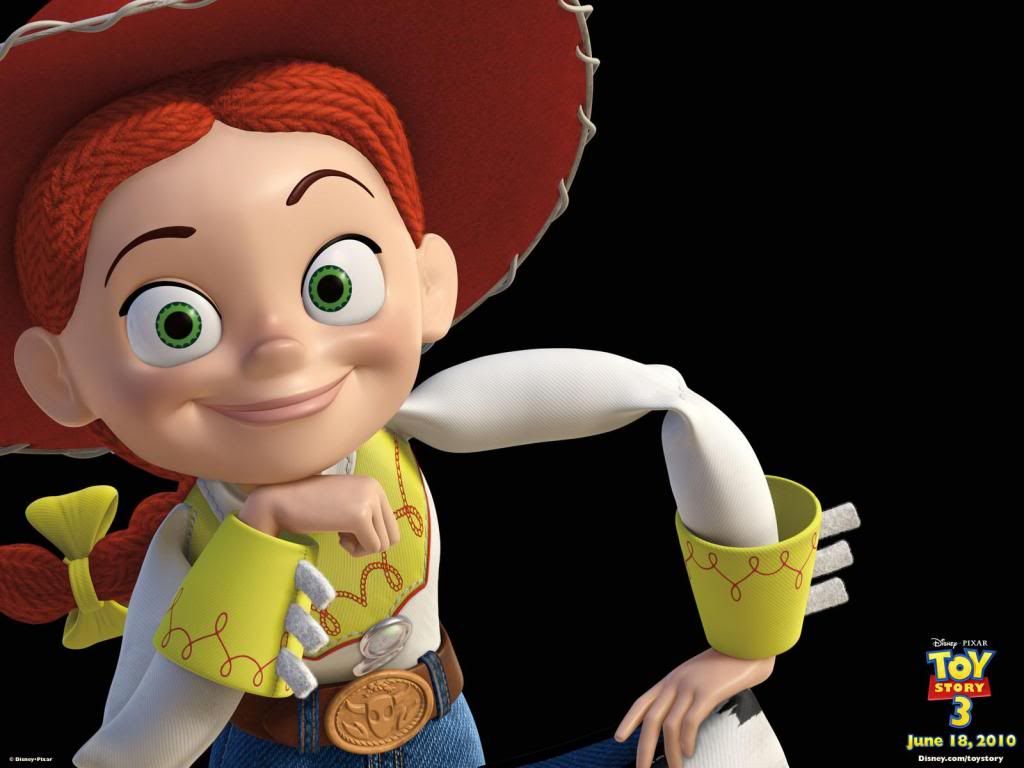
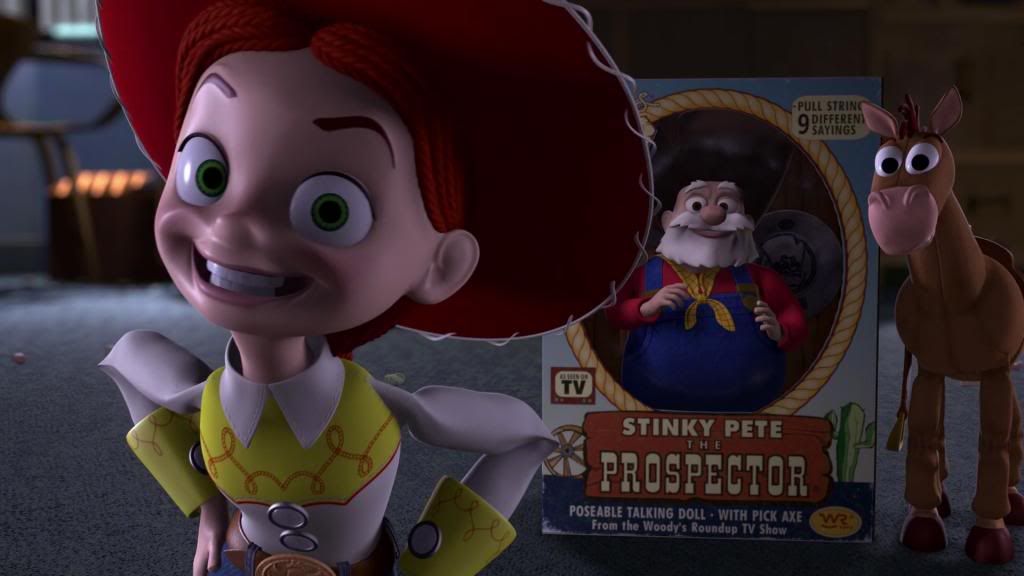
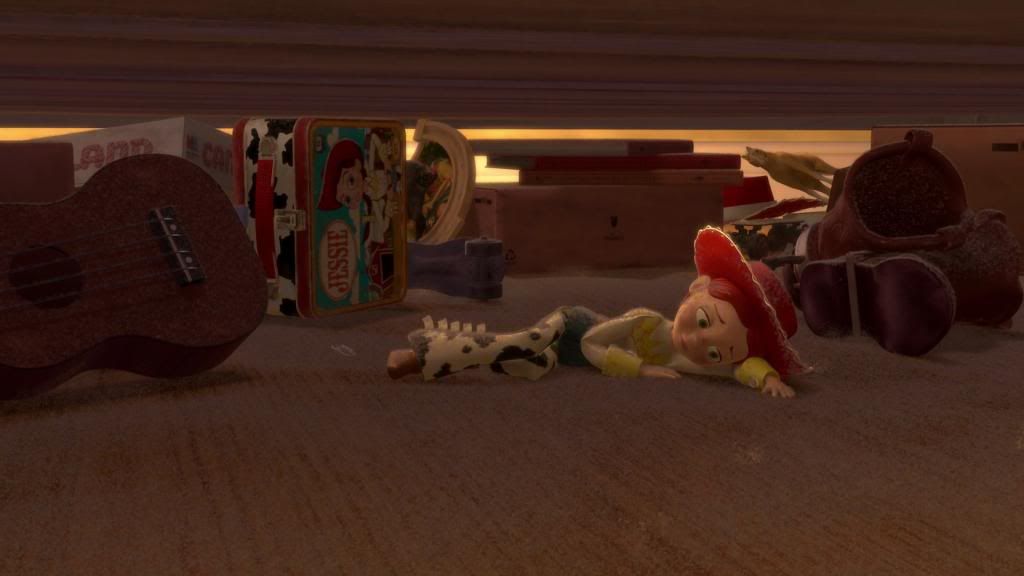
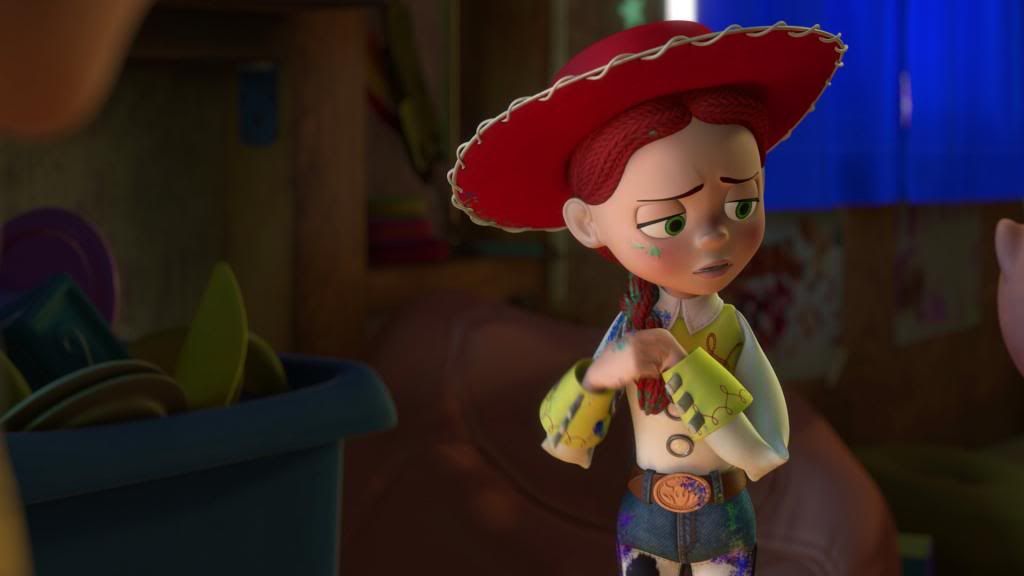

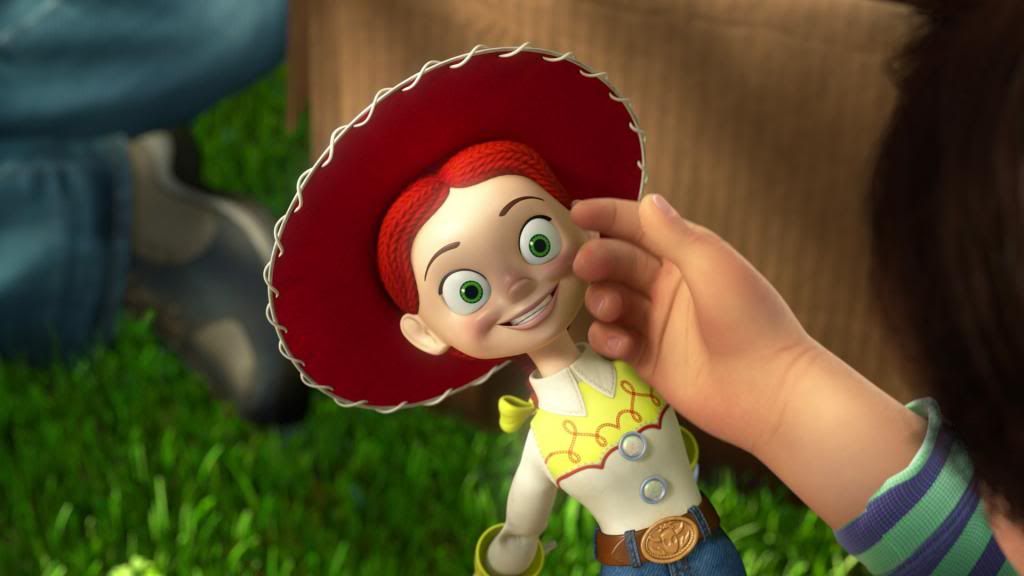
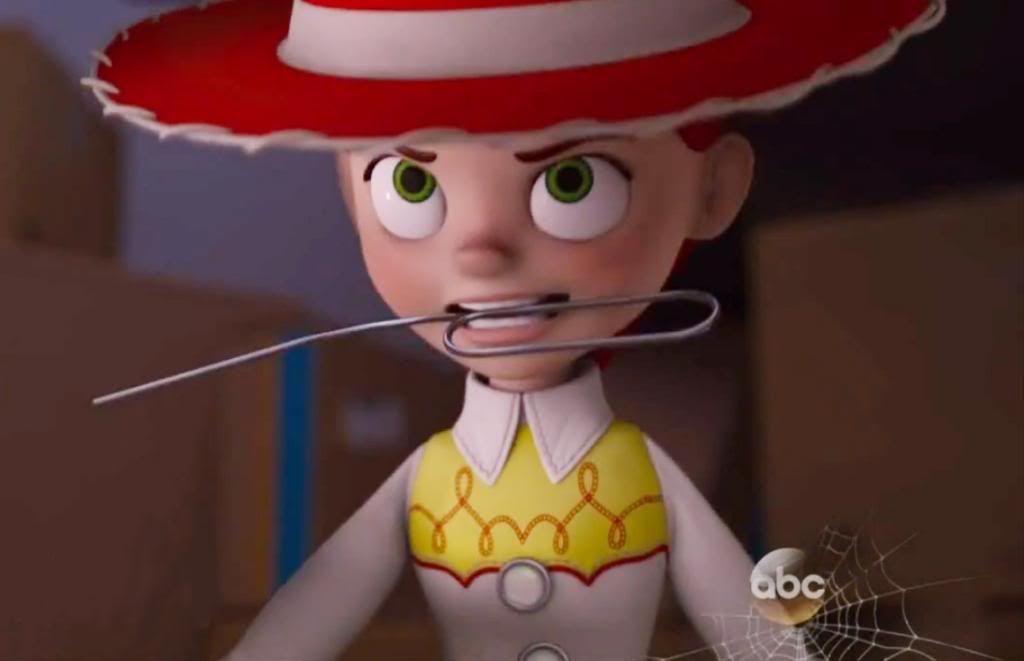

No comments:
Post a Comment